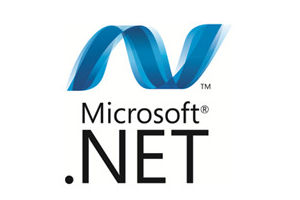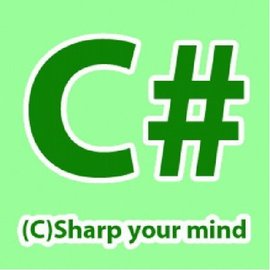Summary of key points to note about UDP servers
This article introduces the UdpClient class which provides simple methods for sending and receiving connectionless UDP packets in synchronous blocking mode. Because UDP is a connectionless transport protocol, you do not need to establish any remote host connection before sending and receiving data. You just need to establish the default remote host options as follows: Create an instance of the UdpClient class using the remote host name and port number as parameters. Create an instance of the UdpClient class and call the Connect method. You can use any of the send methods provided by UdpClient to send data to the remote device. Then use the Receive method to receive data from the remote host. Tip: If you have specified a default remote host, do not use the host name or IPEndPoint to call the Send method. If you do this, UdpClient will throw an exception. The UdpClient methods also allow you to send and receive multicast packets. Using the JoinMulticastGroup method, you can synchronize the UDP server with UdpClient in
1. C# Network Programming Series Articles (8)

Introduction: Originality Statement Author of this article: Xiaozhuzz This article address http://blog./zhujunxxxxx/article/details/44258719 Please indicate the source for reprinting Article Series Directory C# Network Programming series of articles (1) Socket implements asynchronous TCP server C# network programming series of articles (2) Socket implements synchronous TCP server C# network programming series of articles (3) TcpListener implements asynchronous TCP server
2. C# Network Programming Series Articles (7) UdpClient implements asynchronous UDP server

# #Introduction: Originality statement Author of this article: Xiaozhuzz This article address is http://blog./zhujunxxxxx/article/details/44258719 Please indicate the source for reprinting. This article introduces the UdpClient class in synchronous blocking mode for sending and receiving connectionless UDP data. The package provides a simple method. Because UDP is a connectionless transport protocol, you do not need to establish any remote host connection before sending and receiving data. You only need to follow the following methods to establish
3. C# Network Programming Series Articles (6) Socket Implementation Synchronous UDP Server

Introduction: Originality statement Author of this article: Xiaozhuzz This article address http://blog./zhujunxxxxx/article/details/44258719 Please indicate the source for reprinting This article introduces that in .Net, the System.Net.Sockets namespace provides a managed implementation of the Windows Sockets (Winsock) interface for developers who need to tightly control network access. All others in the System.Net namespace
4. C# Network Programming Series Articles (5) Socket Implementation of Asynchronous UDP Server

Introduction: Originality statement Author of this article: Xiaozhuzz This article address http://blog./zhujunxxxxx/article/details/44258719 Please indicate when reprinting Source: This article introduces that in .Net, the System.Net.Sockets namespace provides a managed implementation of the Windows Sockets (Winsock) interface for developers who need to tightly control network access. All other networks in the System.Net namespace
##5.C# Network Programming Series Articles (2) Socket Implementation Synchronization TCP Server

6.
C# network programming series of articles (1) Socket implements asynchronous TCP server Introduction: Originality statement. Because of my love for network programming, I regularly use C# to write various servers (e.g. TCP server, UDP server), but basically it is just for fun. There are many articles about C# network programming on the Internet. Of course, I also referred to articles written by many authors. After reading this article, you no longer need to export to find information. This series of articles will introduce in turn the asynchronous TCP server, synchronous TCP server, asynchronous UDP server, synchronous UDP server implemented using Socket and the use of TcpListe 7. PHP’s Socket communication UDP Communication Example_PHP Tutorial Introduction: UDP communication example of PHP's Socket communication. UDP communication example of PHP's Socket communication This article describes the UDP communication method of PHP's Socket communication. Share it with everyone for your reference. The details are as follows: 1. Create a simple UDP server? 8. Use PHP to build a high-performance TCP/UDP server Introduction: Use PHP to build a high-performance TCP/UDP server 9. Python network programming study notes (3): socket network server Introduction: Server and client programs are very similar. In the previous section, we learned about client programs. In this section, we will learn in detail about using sockets to establish TCP servers and UDP servers. 10. UDP communication example of PHP's Socket communication Introduction: UDP communication example of PHP's Socket communication. UDP communication example of PHP's Socket communication This article describes the UDP communication method of PHP's Socket communication. Share it with everyone for your reference. The details are as follows: 1. Create a simple UDP server?
The above is the detailed content of Summary of key points to note about UDP servers. For more information, please follow other related articles on the PHP Chinese website!

Hot AI Tools

Undresser.AI Undress
AI-powered app for creating realistic nude photos

AI Clothes Remover
Online AI tool for removing clothes from photos.

Undress AI Tool
Undress images for free

Clothoff.io
AI clothes remover

Video Face Swap
Swap faces in any video effortlessly with our completely free AI face swap tool!

Hot Article

Hot Tools

Notepad++7.3.1
Easy-to-use and free code editor

SublimeText3 Chinese version
Chinese version, very easy to use

Zend Studio 13.0.1
Powerful PHP integrated development environment

Dreamweaver CS6
Visual web development tools

SublimeText3 Mac version
God-level code editing software (SublimeText3)

Hot Topics
 1386
1386
 52
52
 How to use various symbols in C language
Apr 03, 2025 pm 04:48 PM
How to use various symbols in C language
Apr 03, 2025 pm 04:48 PM
The usage methods of symbols in C language cover arithmetic, assignment, conditions, logic, bit operators, etc. Arithmetic operators are used for basic mathematical operations, assignment operators are used for assignment and addition, subtraction, multiplication and division assignment, condition operators are used for different operations according to conditions, logical operators are used for logical operations, bit operators are used for bit-level operations, and special constants are used to represent null pointers, end-of-file markers, and non-numeric values.
 What is the role of char in C strings
Apr 03, 2025 pm 03:15 PM
What is the role of char in C strings
Apr 03, 2025 pm 03:15 PM
In C, the char type is used in strings: 1. Store a single character; 2. Use an array to represent a string and end with a null terminator; 3. Operate through a string operation function; 4. Read or output a string from the keyboard.
 How to handle special characters in C language
Apr 03, 2025 pm 03:18 PM
How to handle special characters in C language
Apr 03, 2025 pm 03:18 PM
In C language, special characters are processed through escape sequences, such as: \n represents line breaks. \t means tab character. Use escape sequences or character constants to represent special characters, such as char c = '\n'. Note that the backslash needs to be escaped twice. Different platforms and compilers may have different escape sequences, please consult the documentation.
 The difference between char and wchar_t in C language
Apr 03, 2025 pm 03:09 PM
The difference between char and wchar_t in C language
Apr 03, 2025 pm 03:09 PM
In C language, the main difference between char and wchar_t is character encoding: char uses ASCII or extends ASCII, wchar_t uses Unicode; char takes up 1-2 bytes, wchar_t takes up 2-4 bytes; char is suitable for English text, wchar_t is suitable for multilingual text; char is widely supported, wchar_t depends on whether the compiler and operating system support Unicode; char is limited in character range, wchar_t has a larger character range, and special functions are used for arithmetic operations.
 The difference between multithreading and asynchronous c#
Apr 03, 2025 pm 02:57 PM
The difference between multithreading and asynchronous c#
Apr 03, 2025 pm 02:57 PM
The difference between multithreading and asynchronous is that multithreading executes multiple threads at the same time, while asynchronously performs operations without blocking the current thread. Multithreading is used for compute-intensive tasks, while asynchronously is used for user interaction. The advantage of multi-threading is to improve computing performance, while the advantage of asynchronous is to not block UI threads. Choosing multithreading or asynchronous depends on the nature of the task: Computation-intensive tasks use multithreading, tasks that interact with external resources and need to keep UI responsiveness use asynchronous.
 How to convert char in C language
Apr 03, 2025 pm 03:21 PM
How to convert char in C language
Apr 03, 2025 pm 03:21 PM
In C language, char type conversion can be directly converted to another type by: casting: using casting characters. Automatic type conversion: When one type of data can accommodate another type of value, the compiler automatically converts it.
 What is the function of C language sum?
Apr 03, 2025 pm 02:21 PM
What is the function of C language sum?
Apr 03, 2025 pm 02:21 PM
There is no built-in sum function in C language, so it needs to be written by yourself. Sum can be achieved by traversing the array and accumulating elements: Loop version: Sum is calculated using for loop and array length. Pointer version: Use pointers to point to array elements, and efficient summing is achieved through self-increment pointers. Dynamically allocate array version: Dynamically allocate arrays and manage memory yourself, ensuring that allocated memory is freed to prevent memory leaks.
 How to use char array in C language
Apr 03, 2025 pm 03:24 PM
How to use char array in C language
Apr 03, 2025 pm 03:24 PM
The char array stores character sequences in C language and is declared as char array_name[size]. The access element is passed through the subscript operator, and the element ends with the null terminator '\0', which represents the end point of the string. The C language provides a variety of string manipulation functions, such as strlen(), strcpy(), strcat() and strcmp().




